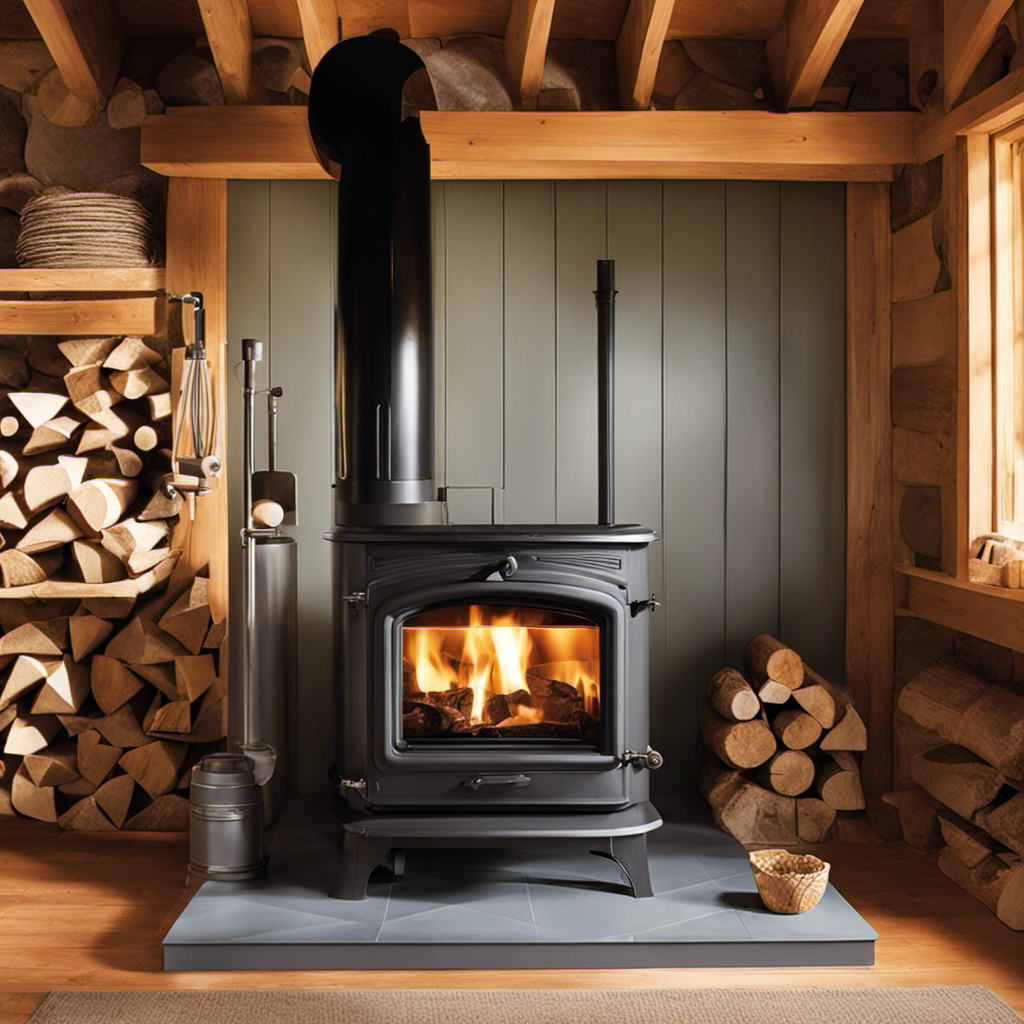I will demonstrate how to construct an outdoor wood stove that will make you feel like a true expert in managing fires.
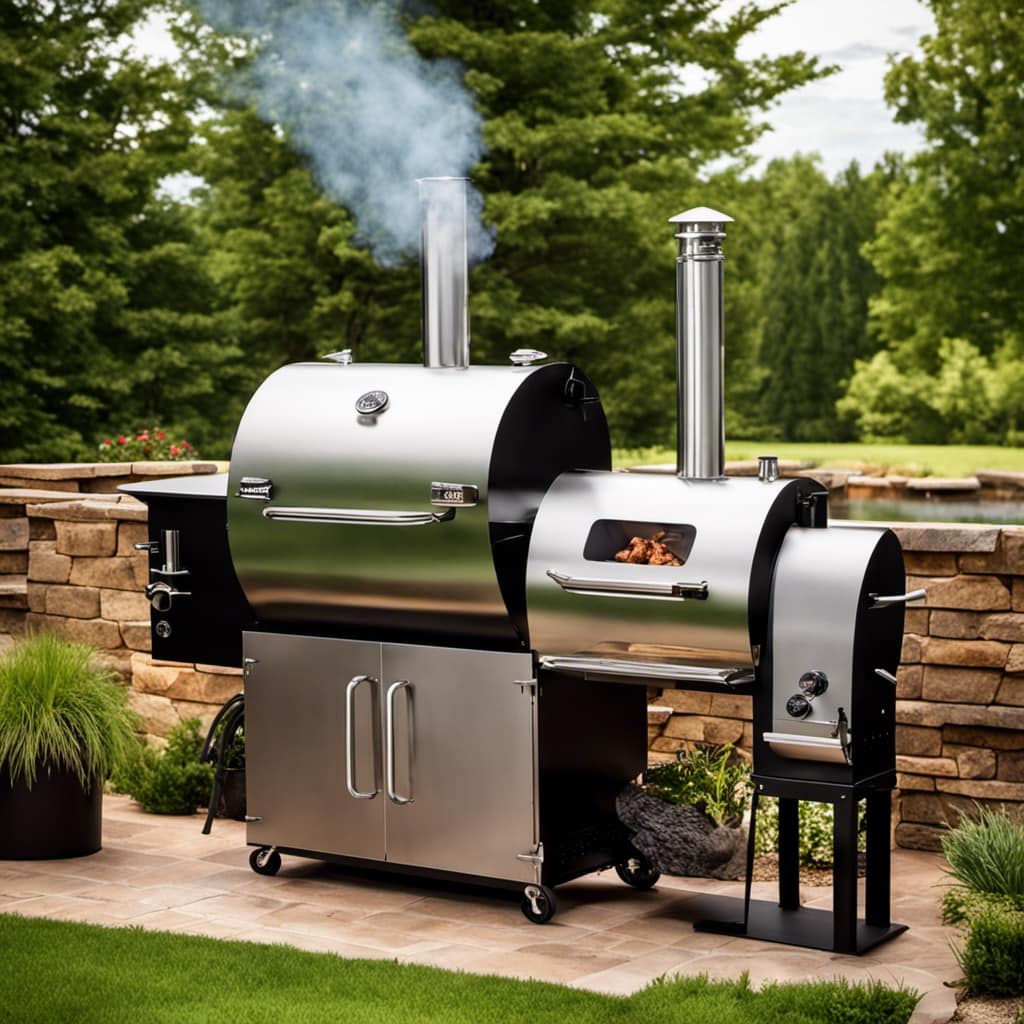
Get ready to gather your materials and tools, design and plan your stove, construct the firebox and chimney, and install insulation and safety features.
I’ll guide you through every step, ensuring you end up with a top-notch wood stove.
So, grab your hard hat and let’s get to work!
Key Takeaways
- Choose a flat and stable location away from combustible materials
- Ensure proper ventilation to prevent smoke and fume buildup
- Build a sturdy and level base using concrete blocks or bricks
- Regularly clean the chimney to remove creosote buildup
Gathering Materials and Tools
I’m gathering all the materials and tools needed to build the outdoor wood stove.
First and foremost, it’s crucial to choose the right location for the stove. Look for a flat, stable area away from any combustible materials, such as trees or structures.
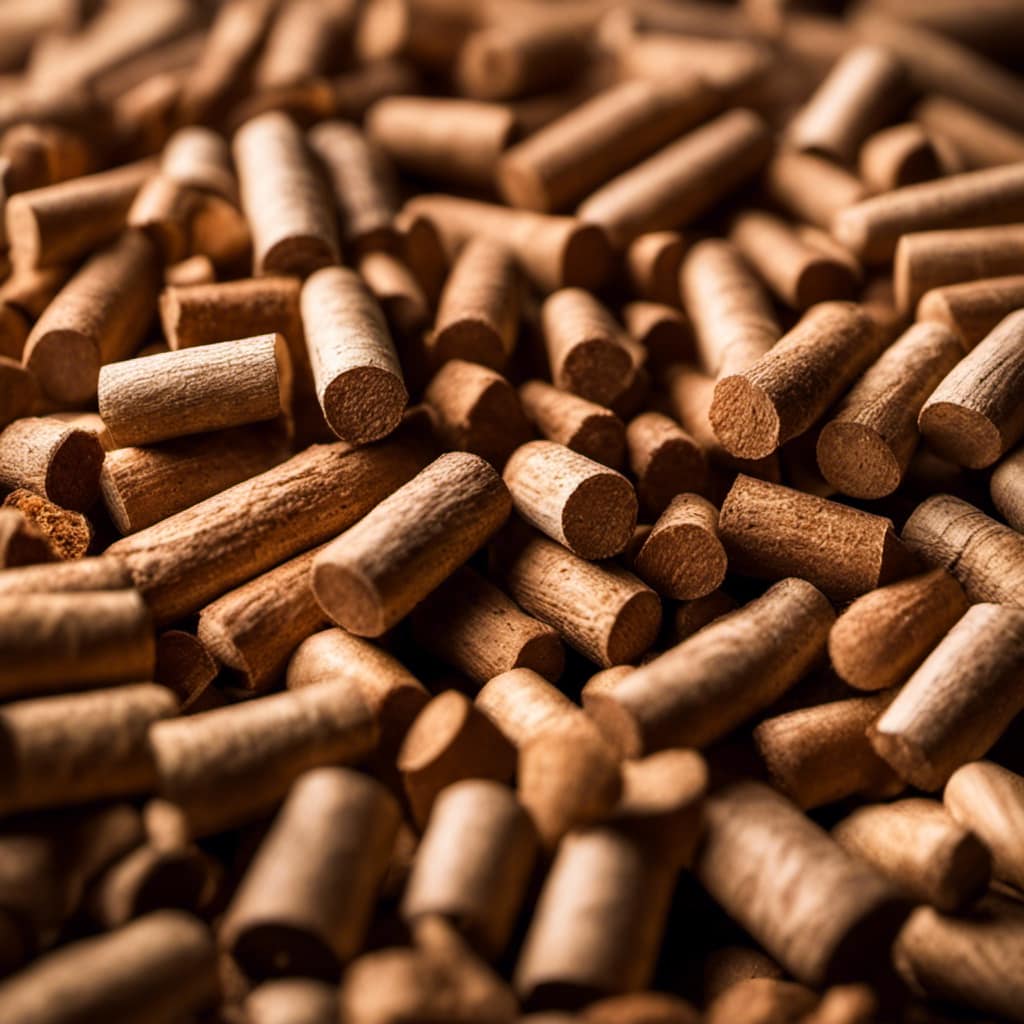
Safety precautions during construction are essential to prevent accidents and ensure a successful build. Wear appropriate safety gear, including gloves and safety glasses, throughout the process. Make sure to have a fire extinguisher nearby in case of emergencies.
Additionally, ensure proper ventilation to prevent the buildup of smoke and fumes. It’s also important to have a clear understanding of the local building codes and regulations to ensure compliance.
Designing and Planning Your Wood Stove
When planning my wood stove, I start by considering the size and layout of my outdoor space. It’s crucial to choose the right location for your wood stove to ensure both safety and efficiency.
First, make sure the stove is located at least 10 feet away from any combustible materials, such as buildings, trees, or fences. This will minimize the risk of accidental fires.
Additionally, the stove should be placed on a non-combustible surface, such as concrete or brick, to prevent heat damage. Adequate ventilation is also essential, so ensure there’s enough space around the stove for proper airflow.
Lastly, consider the direction of prevailing winds to avoid smoke blowing towards your home or neighboring properties.
Constructing the Firebox and Chimney
As I construct the firebox and chimney, I need to ensure they’re properly designed and installed to facilitate efficient burning and safe ventilation. Building the base is the first step in this process. It should be sturdy and level to provide a stable foundation for the stove. I recommend using concrete blocks or bricks to create a solid platform.
Next, I’ll construct the firebox using heat-resistant materials such as firebrick or refractory cement. This will ensure that the firebox can withstand high temperatures and prevent damage. The chimney should be positioned vertically and extend above the roofline to ensure proper draft.
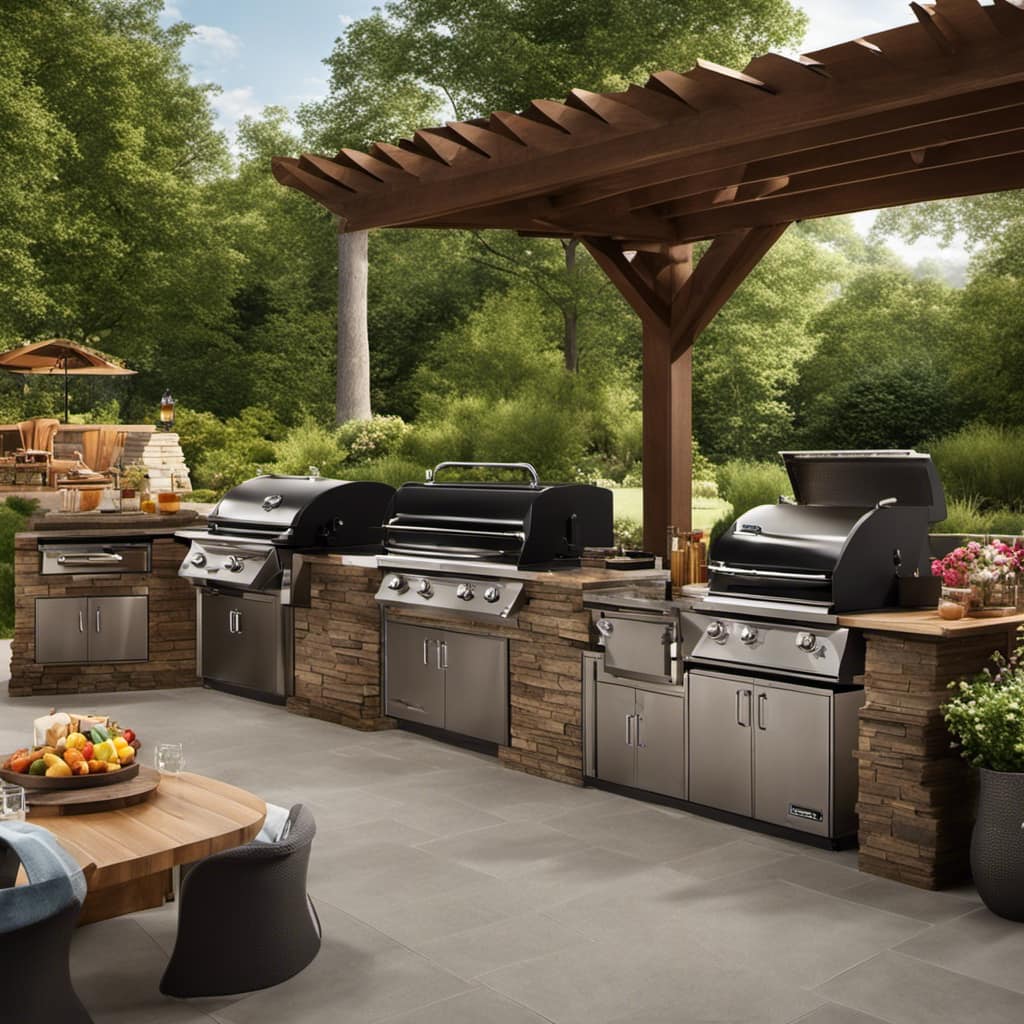
Regular maintenance is crucial for the longevity and efficiency of the wood stove. This includes cleaning out ash and debris regularly and inspecting the chimney for any blockages or damage.
Installing Insulation and Safety Features
To ensure safety and efficiency, insulation and safety features must be installed properly.
When it comes to installing insulation, it’s crucial to choose the right type and thickness for your outdoor wood stove. Insulation helps retain heat and prevents it from escaping, maximizing the stove’s performance.
Begin by measuring the dimensions of the stove and cut the insulation accordingly. Carefully place the insulation around the stove, ensuring it covers all sides and corners. Use high-temperature adhesive or tape to secure it in place.
Additionally, safety features such as a fireproof barrier and a smoke detector are essential. The fireproof barrier prevents accidental contact with hot surfaces, while the smoke detector alerts you to any potential fire hazards.
Installing insulation properly and incorporating safety features guarantees a safer and more efficient outdoor wood stove.
Testing and Using Your Outdoor Wood Stove
I find it important to regularly test and use my outdoor wood stove to ensure it functions properly and efficiently.
Here are some tips for maximizing heat efficiency and reducing smoke emissions in your outdoor wood stove:
-
Clean the chimney: Regularly clean the chimney to remove creosote buildup, which can reduce the stove’s efficiency and increase the risk of chimney fires.
-
Check the gaskets: Inspect the door gaskets for any signs of wear or damage, as they play a crucial role in maintaining a tight seal and preventing air leaks.
-
Use dry firewood: Burning dry firewood not only produces more heat but also reduces smoke emissions. Aim for wood with a moisture content below 20%.
-
Control the air intake: Adjust the air intake to regulate the combustion process. Too much air can lead to faster burn times and increased smoke, while too little air can result in incomplete combustion.
-
Maintain a clean firebox: Regularly remove ashes and debris from the firebox to ensure proper airflow and prevent the accumulation of flammable materials.
Frequently Asked Questions
How Much Does It Cost to Build an Outdoor Wood Stove?
Building an outdoor wood stove requires careful cost estimation and the gathering of necessary materials. It’s important to consider factors such as the type of stove, size, and quality of materials when determining the total cost.
Is It Safe to Use an Outdoor Wood Stove During the Winter?
Using an outdoor wood stove during winter has pros and cons. It provides heat and a cozy atmosphere, but there is a risk of carbon monoxide poisoning. Prevent this by ensuring proper ventilation and regular maintenance.

Can I Use Any Type of Wood in My Outdoor Wood Stove?
Yes, you can use different types of wood in your outdoor wood stove. Hardwoods like oak and maple are ideal as they burn longer and produce more heat. Softwoods like pine ignite easily but burn faster.
How Often Do I Need to Clean My Outdoor Wood Stove?
I clean my outdoor wood stove every month using a wire brush and ash shovel. First, I remove the ashes and clean the inside. Then, I scrub the outside with soapy water to remove any dirt or grime.
Can I Use My Outdoor Wood Stove for Cooking as Well?
Yes, you can use an outdoor wood stove for cooking. It offers a unique and flavorful cooking experience. The benefits of using an outdoor wood stove for cooking include enhanced flavors, versatility, and the ability to cook a wide range of recipes.
Conclusion
And there you’ve it, folks! Your very own outdoor wood stove is now ready to keep you warm and cozy during those chilly evenings.
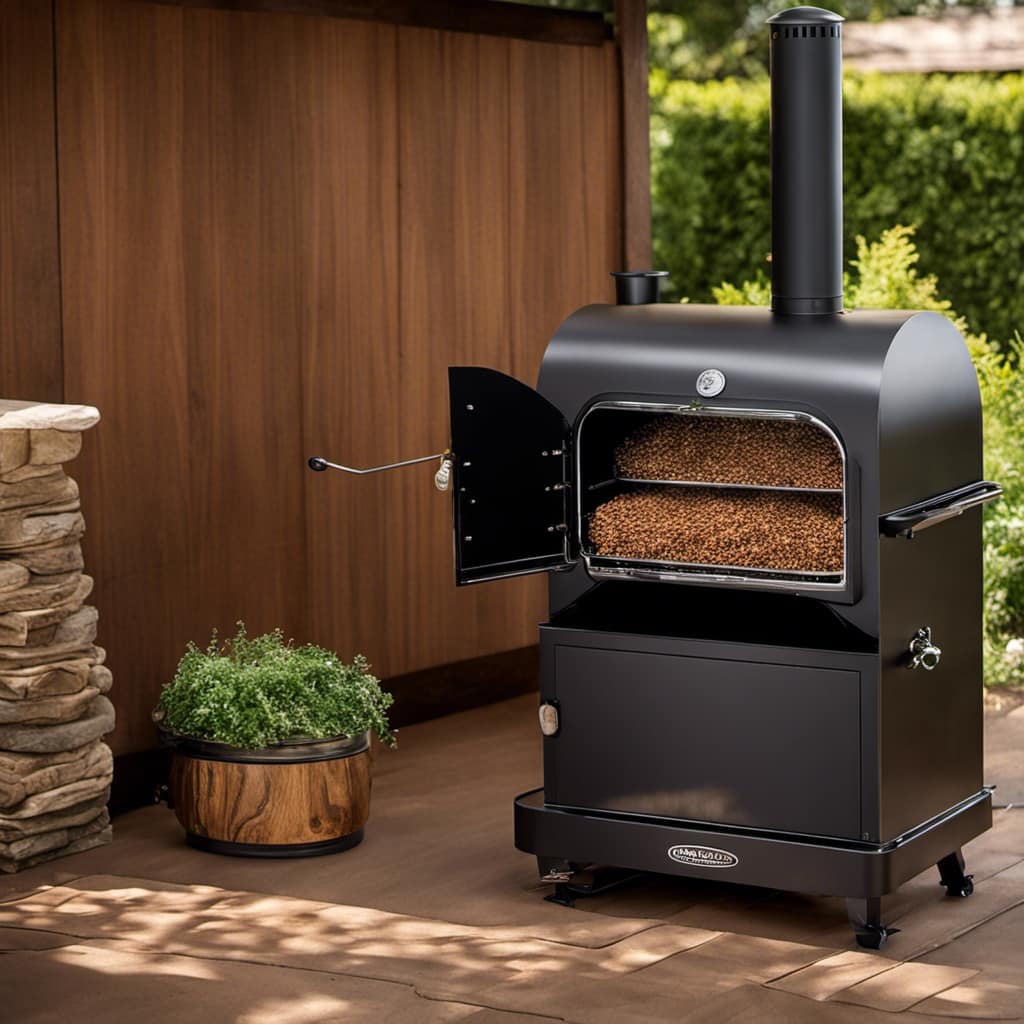
Remember to always follow safety guidelines and check local regulations before using your stove.
Now go ahead and gather your friends and family for some good old-fashioned outdoor cooking and storytelling around the fire.
Happy stove-building!
Growing up surrounded by the vast beauty of nature, Sierra was always drawn to the call of the wild. While others sought the comfort of the familiar, she ventured out, embracing the unpredictable and finding stories in the heartbeat of nature.
At the epicenter of every remarkable venture lies a dynamic team—a fusion of diverse talents, visions, and passions. The essence of Best Small Wood Stoves is crafted and refined by such a trio: Sierra, Logan, and Terra. Their collective expertise has transformed the platform into a leading authority on small wood stoves, radiating warmth and knowledge in equal measure.




